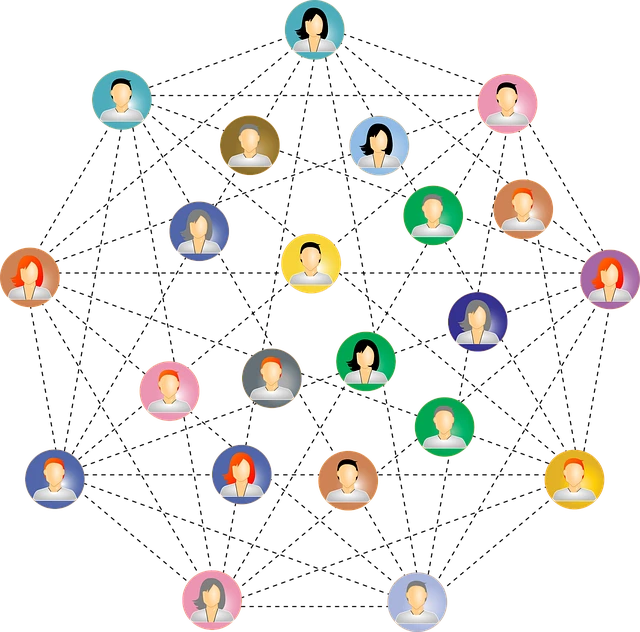What 85% of Successful Affiliates Do Differently (And How You Can Join Them)

Affiliate marketing is one of the best ways to build an online income. Done right, it can pay well and keep growing. Some affiliates make six or seven figures a year. Others struggle to make a few dollars.
Why?
It’s not just luck. About 85% of the top affiliates follow specific strategies that separate them from the rest. They don’t just hope for the best or try to get rich fast. They know what they’re doing and keep at it.
On the other hand, people who struggle usually skip important steps, focus on the wrong things, or give up too soon.
I’ve been doing this long enough to see what makes someone successful. Winning at affiliate marketing isn’t about working the hardest. It’s about making smart choices, using the right strategies, and being consistent.
In this article, I’ll show you exactly what the best affiliates do, how you can make changes, and what steps you need to take to start making real money.
Affiliate Marketing Mastery is my favorite and most recommendable guide for this topic. It dives deep into the key strategies top affiliates use from choosing the right niche, building a brand, driving traffic, optimizing conversions, and scaling for long-term success. It is worth checking.
Key Takeaways
- Top affiliates treat their business seriously, stay patient, and adapt to challenges.
- Choosing the right niche and high-converting offers is a calculated decision, not guesswork.
- Building a brand and establishing authority creates trust and long-term success.
- High-quality content and SEO drive consistent, organic traffic that compounds over time.
- Using multiple traffic sources, including paid ads and email marketing, ensures business stability.
- Continuous testing and optimization improve conversions and maximize earnings.
- Staying ahead requires networking, learning, and adapting to industry changes.
What Successful Affiliates Do Differently and How You Can Adjust to Their Strategies
Let’s get started…
1. The Mindset of a Successful Affiliate
Successful affiliates don’t treat this like a casual side hustle. They see it as a real business. That’s the difference between those who make life-changing income and those who give up after a few months.

Taking Affiliate Marketing Seriously
Most people dip their toes in, hoping for quick money. They throw up a website, post a few links, and expect results. When nothing happens, they assume it doesn’t work. Successful affiliates do the opposite. They know this is a business that requires time, effort, and strategy.
They invest in learning, test different approaches, and stick with it. They build systems, not just one-off campaigns. They treat their content, audience, and traffic sources like real assets. They show up every day, even when results aren’t instant. That’s why they win.
Thinking Long-Term and Staying Patient
This isn’t a get-rich-quick scheme. The top affiliates don’t chase overnight success. They focus on building a business that pays them for years. They know the first few months or even the first year might be slow. That’s normal.
Instead of quitting, they keep refining their strategy. They create high-quality content, grow their audience, and test different offers. They understand that results compound over time. The more they build, the easier it gets.
Most people quit because they expect instant rewards. The ones who stick with it end up dominating because they outlast the competition.
Using Data and Testing Everything
Successful affiliates don’t guess. They track everything—clicks, conversions, email open rates, and traffic sources. They don’t assume an offer will work; they test it.
If something isn’t converting, they figure out why. Maybe the audience isn’t the right fit. Maybe the landing page needs some adjustments. Instead of complaining, they adjust.
They experiment with different headlines, calls to action, and content formats. They don’t take failures personally. If something doesn’t work, they learn from it and move forward.
For Example
Let’s take two people: Jake and Ryan. Both start affiliate marketing at the same time, but their mindsets are completely different.
Jake: The Hobbyist
Jake treats affiliate marketing like a side hustle. He picks a random niche, sets up a basic website, and throws some affiliate links on it.
He doesn’t bother researching his audience or testing what works. After a few months with little to no commissions, he gets frustrated and quits, saying, “Affiliate marketing is a scam.”
Ryan: The Business-Minded Affiliate
Ryan, on the other hand, treats this like a real business. He chooses a niche he understands, researches high-converting products, and creates valuable content.
He doesn’t expect quick results, so he keeps publishing and testing. When something doesn’t work, he looks at the data, tweaks his approach, and keeps going.
At first, Ryan only makes a few dollars. But after six months, his traffic grows. He builds an email list, experiments with different offers, and improves his conversions. After a year, he’s making steady income. By year two, he’s earning more than his old 9-to-5 job.
The Lesson
Ryan didn’t have better luck—he had a better mindset. He treated affiliate marketing like a business, focused on long-term success, and used data to improve. Jake gave up too soon because he expected fast money.
This is exactly why most affiliates fail, while a small percentage dominate. Which one do you want to be?
My Final Thoughts on This
Affiliate marketing is a business. If you treat it like one, you’ll see results. Success comes from patience, consistency, and smart decision-making. Those who stick with it, test everything, and keep improving will always come out ahead.
2. Choosing the Right Niche and Offers
Picking the right niche and offers is the foundation of affiliate success. Get this wrong, and nothing else matters. The best affiliates don’t chase random high-paying products. They focus on niches they understand and products their audience actually wants.
Why Successful Affiliates Stick to Niches They Know
Affiliate marketing works best when you know what you’re talking about. If you pick a niche just because it “pays well” but you have zero interest or knowledge, it shows. Your content will be shallow, your recommendations won’t feel real, and your audience won’t trust you.
Top affiliates choose niches where they have experience or at least a genuine interest. This makes content creation easier and more natural. It also helps build trust because people can tell when someone actually knows their stuff.
The image below highlights key features of a perfect niche you should consider.

For example, if you’ve been into fitness for years, promoting workout programs or supplements makes sense. You’ll know the struggles, the common questions, and what actually works. That’s how you create content that connects and converts.
Finding High-Converting Products and Programs
Not all affiliate programs are worth your time. Some look good on the surface but have terrible conversion rates, delayed payments, or high refund rates. Smart affiliates do their homework before promoting anything.
Here’s what they look for:
- Proven demand – Are people already buying this product? Check reviews, sales trends, and competitor promotions.
- Fair commission structure – Higher commissions are great, but not if the product barely sells. Sometimes lower-paying, in-demand products make more money.
- Reliable affiliate program – Does the company track sales correctly? Do they pay on time? A bad affiliate program can waste months of effort.
- Upsells and recurring income – Some programs offer ongoing commissions for repeat customers. This builds passive income over time.
Successful affiliates test different offers, track conversions, and drop what doesn’t work. They focus on products that bring consistent sales, not just high commissions.
Audience Alignment Over Commission Rates
A big mistake beginners make is chasing the highest commissions instead of thinking about their audience. Just because a product pays well doesn’t mean it’s a good fit.
Top affiliates put their audience first. They ask:
- Does this product solve a real problem my audience has?
- Would I personally use or recommend this?
- Does it match the content I create?
If the answer is no, they move on. Promoting irrelevant or low-quality products kills trust. Once people stop trusting your recommendations, your entire affiliate business falls apart.
Finally, Picking the right niche and offers is about knowing your space, finding products that actually sell, and putting your audience first. Do that, and the commissions take care of themselves.
3. Building a Brand, Not Just a Website
A website alone won’t make you money. Plenty of affiliates have sites that never take off. What separates the top earners is branding. They aren’t just another generic site pushing links—they build a name people trust.
Why Branding Matters in Affiliate Marketing
Most people don’t buy from random links. They buy from sources they trust. Branding makes you that trusted source. It’s what makes people come back, take your advice, and choose your recommendations over someone else’s.
For instance, think about it like this. If you Google “best running shoes,” would you rather buy from a faceless website or a well-known runner who reviews shoes with real experience? That’s the power of branding.
How Successful Affiliates Create Authority
Authority isn’t about faking expertise. It’s about proving you know your stuff. Top affiliates do this by:
- Sharing real insights instead of generic content.
- Using personal stories to connect with their audience.
- Staying consistent with their messaging, visuals, and voice.
- Showing up where their audience hangs out—social media, YouTube, podcasts.
- Engaging with their audience instead of just selling to them.
The more people see you as a go-to source, the easier it is to sell. They stop questioning your recommendations because they already trust your opinion.
The Role of Personal Branding and Trust-Building
Your brand isn’t just your logo or colors. It’s your personality, values, and the way you communicate. The best affiliates inject themselves into their brand. They let their audience see who they are.
Here’s how they build trust:
- Being transparent – No shady promotions, no hyped-up claims.
- Sharing personal experiences – What worked for them, what didn’t.
- Showing their face – Videos, live streams, real interactions.
- Delivering value first – Helping before asking for a sale.
A faceless site with random links won’t get you far. A brand that people trust? That’s what builds long-term success.
4. Mastering Content Creation & SEO

Great content is the backbone of successful affiliate marketing. People don’t just click links, but they look for real advice.
If your content isn’t helpful, they’ll scroll past it. Top affiliates know this, so they put serious effort into creating high-quality, valuable content that people actually want to read or watch.
They don’t just post random blog posts or videos. They create content that solves problems, answers questions, and helps people make informed decisions.
Whether it’s a detailed product review, a comparison guide, or a tutorial, every piece of content has a purpose of helping the audience while driving conversions.
Recommended reading: Why Valuable Content Wins in Affiliate Marketing (And How to Create It)
SEO (Search Engine Optimization) plays a big role in making sure this content gets found. If your content isn’t ranking on search engines, it won’t bring in traffic. The best affiliates focus on buyer-intent keywords, which are the search terms used by people who are ready to make a purchase.
For example, someone searching for “best running shoes for flat feet” is likely closer to buying than someone just typing “how to start running.”
To rank well, top affiliates do keyword research, optimize their content with proper formatting, and get backlinks from other reputable websites. They also experiment with different content formats like blog posts, videos, email sequences to see what resonates best with their audience.
It’s not just about stuffing keywords into articles. The best content is easy to read, engaging, and genuinely useful. If you can create content that both search engines and real people love, you’ll have a strong foundation for long-term success.
Putting all your traffic in one place is risky. If an algorithm changes, your site gets penalized, or an ad account gets banned, your income takes a hit. Successful affiliates don’t make that mistake. They spread their traffic sources to keep their business stable and growing.
5. Leveraging Multiple Traffic Sources

Relying on one traffic source is a very big mistake. If that platform changes the rules, your income can disappear overnight.
Smart affiliates diversify their traffic. They don’t just depend on Google, Facebook, or YouTube alone, but they build multiple streams so their business stays stable.
Let’s break down how they do it.
Why Relying on One Traffic Source is a Mistake
Let’s say you get all your traffic from Google. One day, an algorithm update drops your rankings, and suddenly, your visitors vanish. The same thing can happen with YouTube, Facebook, TikTok, or any platform that controls your reach.
Even paid ads aren’t safe because costs can rise, or accounts can get suspended. Putting all your effort into one source means giving that platform control over your business.
Top affiliates avoid this trap by using multiple traffic streams. If one drops, they still have others bringing in visitors and sales.
How Successful Affiliates Use Organic and Paid Traffic
Traffic comes in two types: organic (free) and paid (advertising). The best affiliates use both.
- SEO (Search Engine Optimization): They optimize content to rank on Google, bringing in free, long-term traffic. This works well for blogs and review sites.
- YouTube: Video marketing is huge. People trust product recommendations more when they see someone using them. Many top affiliates build an audience here.
- Social Media (Facebook, Instagram, TikTok, Twitter): These platforms help build brand awareness, connect with audiences, and drive traffic back to their site.
- Paid Ads (Google Ads, Facebook Ads, YouTube Ads, etc.): Paid traffic helps scale what’s already working. Successful affiliates test ads carefully and reinvest profits.
Balancing free and paid traffic creates steady growth without relying too much on one method.
The Role of Email Marketing in Long-Term Success
Most visitors won’t buy the first time they see an offer. That’s why email marketing is crucial. Smart affiliates collect emails through lead magnets, such as free guides or discount codes. Once someone is on the list, they can be nurtured with valuable content, product recommendations, and special offers.
Recommended reading: How to Build a Strong Email List for Your Affiliate Marketing Business
Related topic: 12 Best Free Email Marketing Tools You Need For Your Affiliate Business
An email list is an asset you own. Unlike social media followers or website visitors, no company can take it away from you. Even if all your traffic sources disappear, you can still make money by sending emails to your audience.
The Smart Approach
Successful affiliates don’t depend on luck or one traffic source. They mix SEO, video, social media, paid ads, and email marketing to create a system that keeps working no matter what happens. The more traffic sources you control, the more stable and profitable your business becomes.
6. Prioritizing Conversions & Optimization
Traffic is useless if it doesn’t convert. Successful affiliates don’t just drive visitors, they turn those visitors into buyers. They do this by constantly testing and refining their funnels.
A/B testing is a must. Tweaking a landing page, adjusting a CTA, or changing a headline can double conversions. If you’re not testing, you’re leaving money on the table.
Smart affiliates also use bonuses, urgency, and retargeting to boost sales. A time-limited bonus can push someone to buy now instead of later. Retargeting reminds people about the offer, keeping it fresh in their minds. Small tweaks like these make a big difference in profits.
7. Networking & Learning from Other Affiliates
Affiliate marketing isn’t a solo game. The best affiliates actively connect with others, learning from those ahead of them and sharing insights with peers.

Talking to industry experts can shortcut years of trial and error. Whether it’s through direct mentorship, interviews, or podcasts, successful affiliates always seek advice from those who’ve already figured things out.
A simple conversation can reveal a new traffic source, a profitable offer, or a smarter way to scale.
Affiliate marketing communities and masterminds are goldmines. Being in a group of like-minded marketers means getting fresh strategies, staying motivated, and troubleshooting problems faster.
Private Facebook groups, forums, and live events are where top affiliates trade secrets that aren’t shared publicly. If you’re not part of a community, you’re missing out on insider knowledge.
Join my affiliate marketing community for real strategies, expert insights, and direct support to grow your business.
Staying updated is just as important. Google changes its algorithm, ad platforms adjust their policies, and what worked yesterday might not work tomorrow.
The best affiliates follow industry news, experiment with new trends, and adapt fast to stay ahead. Those who ignore updates eventually fall behind.
8. Treating Affiliate Marketing as a Real Business
Most affiliates fail because they treat it like a hobby. The successful ones act like business owners. They track finances, reinvest profits, and manage risks. They focus on long-term growth, not quick cash.
Tracking Finances and Managing Risks
Affiliate marketing has ups and downs. One month, commissions are high; the next, they drop. Smart affiliates track every dollar—income, expenses, and profit margins. They use tools like QuickBooks or simple spreadsheets to monitor cash flow.
Managing risk is just as important. Relying on one traffic source or one affiliate program is dangerous. A Google update, an ad account ban, or a program shutting down can wipe out income overnight. Diversification is key—multiple programs, multiple traffic sources.
Reinvesting Profits for Growth
Successful affiliates don’t just pocket their commissions—they reinvest. They put money into better content, ads, tools, and automation. For example:
- Hiring writers or video editors to scale content creation.
- Running paid ads to speed up traffic growth.
- Testing new software like email marketing tools or AI-driven analytics.
Reinvestment turns an affiliate site from a side hustle into a real business. The goal is to make more with less effort over time.
Scaling with Systems and Automation
If you do everything manually, growth stops when you stop working. Top affiliates build systems. They automate emails, content scheduling, and reporting.
For example:
- Email sequences nurture leads on autopilot.
- Chatbots answer common questions.
- Ad retargeting brings back lost visitors.
Automation lets you focus on strategy instead of daily tasks.
The Mindset Shift: From Quick Money to Sustainable Income
Amateurs chase quick wins—promoting trending products, spamming links, or relying on loopholes. That’s a short-lived game. Professionals build trust, authority, and lasting income streams.
They create content that ranks for years. They build email lists. They focus on repeat customers. The real money in affiliate marketing comes from a solid foundation, not overnight success.
Treat affiliate marketing like a real business, and it will pay you like one.
Conclusion
Affiliate marketing is a real business, not a quick cash grab. The best affiliates know this. They focus on building trust, delivering value, and creating systems that generate income long-term. They don’t rely on luck or one traffic source. Instead, they test, optimize, and refine every part of their strategy.
Success comes from consistency and smart decisions. Affiliates who stay ahead are the ones who learn, adapt, and connect with the right people. They don’t chase trends or shortcuts. They invest in their growth, automate where possible, and always keep the audience in mind.
To succeed, treat it like a business.
Track your finances, reinvest in what works, and focus on long-term stability. Build an audience, nurture relationships, and commit to real value. That’s the difference between those who last and those who fade out.
Frequently Asked Questions
How long does it take to make money with affiliate marketing?
It depends on your approach. Some affiliates see results in a few months, while others take a year or more. Success comes from choosing the right niche, driving quality traffic, and optimizing conversions. If you treat it like a business—testing, improving, and staying consistent—you’ll see steady progress.
Do I need a website to start affiliate marketing?
Not necessarily, but it helps. A website gives you control over your content, SEO, and audience. However, some affiliates succeed using social media, YouTube, or email marketing. The key is providing value and building trust, regardless of the platform.
What’s the best traffic source for affiliate marketing?
No single traffic source is perfect. The best affiliates diversify. They use organic traffic (SEO, YouTube, social media), paid ads, and email marketing. The more traffic streams you control, the safer and more profitable your business becomes.
How do I pick the right affiliate program?
Look beyond high commission rates. Choose programs with reliable payouts, strong conversion rates, and products that align with your audience. If people trust your recommendations, they’ll buy. If you push irrelevant offers, they’ll ignore you.
Is affiliate marketing too competitive now?
No. There’s competition, but that means opportunity. New niches, strategies, and products emerge all the time. The key is standing out—offering better content, smarter marketing, and stronger relationships with your audience. Those who adapt win.






